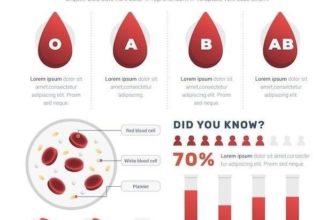- Hyphenation in English⁚ A Comprehensive Guide
- Understanding the Basics⁚ When and Why We Use Hyphens
- Compound Adjectives⁚ Linking Words Before a Noun
- Prefixes and Hyphens⁚ Navigating the Rules and Exceptions
- Hyphens with Numbers and Fractions⁚ Ensuring Clarity and Accuracy
- Avoiding Hyphen Overuse⁚ Recognizing Unnecessary Hyphenation
- Hyphens vs. Dashes⁚ Distinguishing Between Similar Punctuation Marks
Hyphenation in English⁚ A Comprehensive Guide
Hyphens (-) are essential punctuation marks in English, serving to connect words and clarify meaning. They’re often used to create compound adjectives, like «well-known» rules, or to indicate ages, such as a «three-year-old» child. Understanding when to use hyphens can be tricky, as there are specific rules and exceptions. This comprehensive guide will delve into the intricacies of hyphenation, providing clear explanations and examples to help you master this punctuation mark.
Understanding the Basics⁚ When and Why We Use Hyphens
Hyphens, those tiny little dashes that often seem to appear and disappear in words, play a crucial role in English writing. They might seem like minor punctuation marks, but their presence or absence can significantly alter the meaning of a sentence. Let’s delve into the fundamental reasons why we use hyphens and explore the common scenarios where they are essential.
At their core, hyphens serve as bridges, connecting words or parts of words to create a single unit of meaning. Imagine them as tiny connectors that signal to the reader that a group of words functions as a single adjective, a combined number, or even a word broken across lines.
One of the primary functions of hyphens is to form compound adjectives. These are two or more words that work together to modify a noun; For instance, «a well-known author» uses a hyphen to combine «well» and «known» to create a single descriptive unit before the noun «author.» Without the hyphen, the phrase could be misinterpreted as «a well author who is known,» altering the intended meaning.
Hyphens are also crucial when writing numbers, particularly those between twenty-one and ninety-nine. They link the tens and ones digits, ensuring clarity and preventing misinterpretations. For instance, «thirty-three» is easily distinguishable from «thirty three» thanks to the hyphen. Similarly, fractions written as words require hyphens, like «two-thirds» or «three-quarters,» to signify that these words represent a single fraction.
Beyond compound adjectives and numbers, hyphens are used with certain prefixes and suffixes. For instance, prefixes like «ex-» (meaning former), «self-,» and «all-» are typically followed by a hyphen. You’ll often see this in words like «ex-boyfriend,» «self-esteem,» and «all-inclusive.» Similarly, when a prefix precedes a capitalized word, a hyphen is used, as in «pre-Columbian» or «post-Renaissance.»
Hyphens also play a crucial role in preventing ambiguity and ensuring that the intended meaning of a sentence is conveyed clearly. Consider the difference between «re-cover» (to cover again) and «recover» (to regain or get back). The hyphen in «re-cover» distinguishes it from the more common meaning of «recover,» preventing confusion.
While the rules of hyphenation might seem complex at times, understanding the basic principles outlined above provides a solid foundation. Hyphens are not merely decorative dashes; they are essential tools that enhance clarity, precision, and readability in English writing. By mastering their use, you can elevate your writing and ensure that your message is conveyed with accuracy and impact.
Compound Adjectives⁚ Linking Words Before a Noun
One of the most common uses of the hyphen in English is in the formation of compound adjectives. These multi-word phrases function as single adjectives, painting a more vivid picture for the reader by combining the descriptive powers of two or more words. Understanding how and when to use hyphens with compound adjectives is essential for clear and grammatically correct writing.
The golden rule for hyphenating compound adjectives is this⁚ use a hyphen when the adjective phrase comes before the noun it modifies. This hyphenation signals to the reader that the words work together as a single unit of description. For instance, in the phrase «a well-known author,» the hyphen in «well-known» tells us that these two words function together to describe the author.
Let’s consider a few examples to illustrate this rule⁚

- With hyphen⁚ She wore a beautiful sky-blue dress.
- Without hyphen⁚ The dress she wore was sky blue.
Notice how the hyphen in «sky-blue» disappears when the phrase follows the noun «dress.» This is because the relationship between the words is already clear without the hyphen in this sentence structure.
Here are some other examples of compound adjectives hyphenated before a noun⁚
- high-quality product
- full-time employee
- five-year plan
- state-of-the-art technology
In each of these examples, the hyphenated words work together to create a single, unified description of the noun they precede. Without the hyphen, the meaning could be ambiguous or misinterpreted.
While the rule for hyphenating compound adjectives before a noun is generally straightforward, there are exceptions and nuances to be aware of. For example, adverbs ending in «-ly» are typically not hyphenated when part of a compound adjective. As you encounter more complex cases, consulting a style guide or dictionary can be helpful. However, mastering this fundamental rule will significantly enhance the clarity and accuracy of your writing.

Prefixes and Hyphens⁚ Navigating the Rules and Exceptions
Hyphens can be tricky companions when it comes to prefixes in English. While some prefixes consistently pair with hyphens, others stand alone, and still others seem to follow their own set of rules. Navigating these rules and exceptions is crucial for maintaining clarity and consistency in your writing.
Let’s start with some general guidelines. Hyphens are often used with prefixes to prevent confusion with other words or to enhance readability. For instance, the prefix «re-» meaning «again» is often hyphenated to avoid misinterpretations with similar words. Compare «re-cover» (to cover again) with «recover» (to regain health). The hyphen in «re-cover» eliminates any potential ambiguity.
Here are a few specific scenarios where hyphens are commonly used with prefixes⁚
- Prefixes before proper nouns or adjectives⁚ Hyphens are generally used when a prefix comes before a capitalized word, such as «pre-Columbian» or «post-Renaissance.»
- Prefixes that end with the same vowel that the root word begins with⁚ To avoid awkward vowel combinations, a hyphen is often used, as in «anti-inflammatory» or «semi-independent.»
- The prefixes «ex-» (meaning former), «self-,» and «all-«⁚ These prefixes are typically followed by a hyphen, as in «ex-boyfriend,» «self-esteem,» and «all-inclusive.»
- Prefixes used with numbers or letters⁚ Hyphens are used to separate prefixes from numbers or letters, as in «mid-1990s» or «pre-A.»
However, there are also instances where hyphens are generally omitted with prefixes. Common prefixes like «un-,» «pre-,» «post-,» and «non-» are often used without hyphens, especially when they are attached to common, everyday words. For example, we write «unhappy,» «prepaid,» «postpone,» and «nonprofit» without hyphens.
As with many aspects of English grammar, exceptions and evolving usage can make hyphenation with prefixes a bit of a moving target. Consulting a style guide or dictionary can be helpful when in doubt. However, keeping these general guidelines in mind will equip you to make informed decisions about hyphen placement with prefixes, ensuring that your writing is clear, consistent, and grammatically sound.
Hyphens with Numbers and Fractions⁚ Ensuring Clarity and Accuracy
Hyphens play a crucial role in writing numbers and fractions, ensuring that these numerical expressions are clear, unambiguous, and grammatically sound. Whether you’re crafting a technical document or a simple email, understanding the rules for hyphenating numbers and fractions is essential for effective communication.
Let’s start with compound numbers, those numerical expressions that combine two or more words to represent a single value. When writing out compound numbers from twenty-one to ninety-nine, hyphens are always required to connect the tens and ones digits. For instance, we write «thirty-three,» «forty-seven,» and «eighty-nine» with hyphens to clearly distinguish these numbers from their individual components.

Fractions, too, rely on hyphens for clarity when written as words. Whether it’s «two-thirds» of a cup or «three-quarters» of an hour, the hyphen between the numerator and denominator signals that these words function as a single unit representing a fraction. Without the hyphen, the meaning could be misconstrued or appear awkward and unprofessional.
Here’s a closer look at the specific rules for hyphenating numbers and fractions⁚
- Compound numbers from 21 to 99⁚ Always hyphenate these numbers when written as words, as in «twenty-one,» «fifty-six,» and «ninety-nine.»
- Fractions written as words⁚ Hyphenate the numerator and denominator, regardless of whether they are singular or plural, as in «one-half,» «two-thirds,» and «five-eighths.»
- Numbers as adjectives before nouns⁚ When a number functions as an adjective modifying a noun, use a hyphen if the number is less than one hundred and precedes the noun. For example, we write «a twenty-minute presentation» or «a six-foot-tall man.»
By adhering to these simple yet crucial rules, you can ensure that your numerical expressions are clear, concise, and grammatically accurate. Remember, hyphens are not merely decorative dashes in these contexts; they are essential tools for conveying numerical information with precision and professionalism.
Avoiding Hyphen Overuse⁚ Recognizing Unnecessary Hyphenation
While hyphens play a crucial role in clarifying meaning and ensuring grammatical accuracy, overusing them can clutter your writing and create unnecessary confusion. Just as a chef strives for a balance of flavors, a writer should aim for a balance of punctuation—using hyphens strategically for clarity and readability, but avoiding them when they are not essential.
One common area where hyphen overuse occurs is with compound modifiers that appear after the noun they modify. While a hyphen is typically required when the compound adjective precedes the noun (e.g., «a well-known author»), it is often unnecessary when the phrase comes after the noun (e.g., «The author is well known»). In these cases, the relationship between the words is already clear without the hyphen.
Another area where hyphens are often misused is with adverbs ending in «-ly.» When these adverbs modify an adjective, a hyphen is generally not required. For instance, we write «a highly competitive market» or «a beautifully designed website» without hyphens. The «-ly» ending of the adverb already signals its role as a modifier, making the hyphen redundant.
Here are some additional tips for avoiding hyphen overuse⁚
- Familiar compound words⁚ Many compound words that were once hyphenated have become so common that the hyphen is no longer necessary. For example, we now write «email,» «website,» and «smartphone» as single words. When in doubt, consult a dictionary to see if the hyphen is still considered standard usage.
- Phrasal verbs used as verbs⁚ Phrasal verbs, which consist of a verb and one or more particles, are generally not hyphenated when used as verbs. For instance, we write «She broke up with her boyfriend» or «He backed up his computer» without hyphens.
- Clarity over strict rules⁚ Ultimately, the goal of punctuation is to enhance clarity. If a hyphen seems unnecessary or even distracting in a particular sentence, it’s generally best to omit it. Trust your judgment and prioritize readability over rigid adherence to every hyphenation rule.
By understanding when hyphens are truly necessary and when they can be safely omitted, you can achieve a balance that enhances the clarity, flow, and overall effectiveness of your writing. Remember, sometimes less is more, and a judicious approach to hyphenation can make all the difference in creating polished and professional prose.

Hyphens vs. Dashes⁚ Distinguishing Between Similar Punctuation Marks
Hyphens, en dashes, and em dashes—these small horizontal lines often leave writers perplexed, wondering which dash to use in different contexts. While they might seem interchangeable at first glance, each dash serves a distinct purpose in English punctuation. Understanding their differences is crucial for crafting clear, grammatically accurate, and visually appealing text.
Let’s begin with the hyphen (-), the shortest of the three dashes. As we’ve explored, hyphens primarily function as connectors, linking words or parts of words to create compound adjectives, represent numbers, and join prefixes and suffixes. Think of hyphens as bridges that create a single unit of meaning from multiple words or elements.
The en dash (–), slightly longer than a hyphen, is often used to indicate a range or span. Think of it as a stand-in for «to» or «through» when expressing numerical or chronological sequences. For instance, we use an en dash to represent a range of pages («pages 10–25»), dates («the 2020–2023 season»), or scores («a 3–2 victory»).
The em dash (—), the longest of the three, is a versatile punctuation mark that adds emphasis or creates a break in a sentence. Think of it as a way to insert a parenthetical thought or to create a dramatic pause. For instance, we use em dashes to set off parenthetical phrases («The concert—which was sold out—was a resounding success») or to indicate an abrupt change in thought («He was about to propose—but then his phone rang»).
Here’s a quick recap to help you distinguish between these three dashes⁚
- Hyphen (-)⁚ Connects words or parts of words, forming compound adjectives, representing numbers, and joining prefixes and suffixes.
- En dash (–)⁚ Indicates a range or span, often replacing «to» or «through» in numerical or chronological sequences.
- Em dash (—)⁚ Creates a break in a sentence, adding emphasis, setting off parenthetical phrases, or indicating an abrupt change in thought.

By mastering the subtle but important distinctions between hyphens, en dashes, and em dashes, you can elevate your writing from grammatically correct to polished and sophisticated. Remember, these small dashes wield significant power in shaping meaning and enhancing readability.








